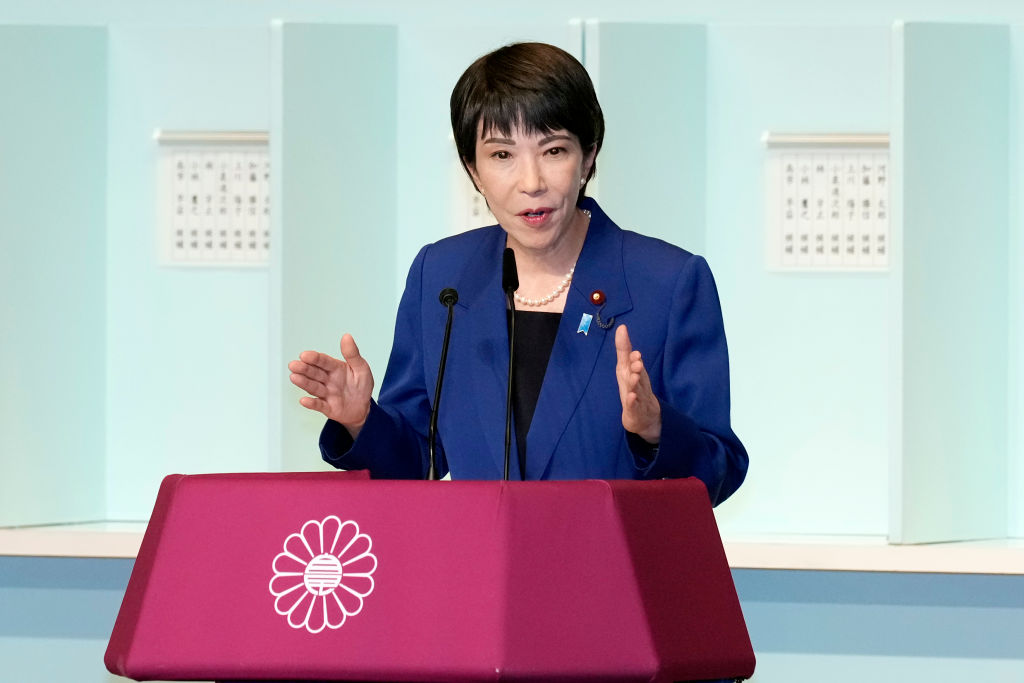On October 4, Japan’s ruling Liberal Democratic Party (LDP), the country’s center-right party, will select a new leader likely to become the next prime minister of the island nation. The leading contender is 64-year-old Sanae Takaichi, a staunch conservative and protégée of former Prime Minister Shinzo Abe who looks set to continue the trend of a global conservative realignment.
The vote this weekend is not open to the public and is instead limited to 295 LDP parliamentarians and about one million dues-paying LDP members. Japanese political analysts view it as a potential turning point for the party in a more conservative direction as more right-wing parties continue to eat into the LDP’s base of support.
Takaichi appears to be in a strong position to meet the moment and is the betting favorite to win the job. Like Donald Trump in the United States and Giorgia Meloni in Italy, Takaichi, who would become Japan’s first female prime minister, promotes a “Japan First” approach. But perhaps the best comparison for Takaichi is Margaret Thatcher, Britain’s famous “Iron Lady.” Like Thatcher, Takaichi has developed a reputation for uncompromising resolve and strict adherence to a defined set of conservative principles.
The election is of particular importance for the United States as Japan faces mounting threats from China just to its west. Amid Beijing’s aggression, Tokyo has sought closer ties with Washington as a security guarantee in a feud that goes back more than a millennium.
As retired German diplomat and professor emeritus of foreign relations Winfried Kästner told me, however, Takaichi faces a daunting list of challenges if she indeed emerges victorious. “How Japan addresses its precarious demographics and a belligerent China literally on Japan’s shores will be the two main challenges that shape the party’s future,” he said.
Japan’s latest population projection, published in 2022, indicates a drastic crisis in the decades ahead. The country’s birth rate has plummeted to 1.2 births per woman, one of the lowest in the world and well below the replacement rate of 2.1. According to current projections, Japan’s population, after peaking at 128 million in 2008, is set to decline to 87 million by 2070.
Such a catastrophic collapse would put impossible pressure on the country’s social services, which rely on a growing pool of workers to pay for the retirement and care of the elderly. Already, the country is facing the crisis of a shrinking workforce and an aging population.
At the same time, Japan also faces continued threats along its borders. In the 2024 “Defense of Japan” report, then-Defense Minister Kihara Minoru stated that “Japan is experiencing the most severe and complex security environment since the post-war era.” Last week, the Ministry again described Japan’s security situation as “increasingly severe.”
Just this week, a Japanese Coast Guard vessel spotted four armed Chinese Coast Guard ships near Japan’s Senkaku Islands, marking more than 300 consecutive days of Chinese presence in the area. Chinese intelligence-gathering ships and aircraft now routinely operate within 35 miles of Japan’s shores.
Takaichi’s plan to address these crises draws heavily from that of her mentor. Like Abe, Takaichi has advocated for prioritizing energy production and semiconductor manufacturing while doubling down on Japan’s tech sector as a source of growth.
Unlike Japanese liberals who are pushing for mass migration from India and Africa to counteract falling birth rates, Takaichi has also advocated for an emphasis on traditional family values as a means to encourage Japanese women to get married and start families. She opposes same-sex marriage and has spoken out against DEI-based hiring.
Professor Hideo Tamura from Reitaku University said that Takaichi’s platform is particularly well-suited for this year’s election. Another former Abe minister said, “What is needed now is politics that can turn our anxieties about life and the future into hope.”
Takaichi’s most serious threat appears to be 44-year-old Shinjiro Koizumi, the son of a popular former prime minister. Koizumi is the agriculture minister for outgoing Prime Minister Shigeru Ishiba. Although the Japanese media rarely covered it, Koizumi oversaw a spectacular rice price crisis due to shortages. His candidacy was also shaken by a recent scandal where members of his campaign staff were caught flooding an online site with flattering comments about him. A key member of his team later resigned.
As of September 28, Takaichi led in the polls with 34.4 percent of the vote, a 3.9-point edge over Koizumi and a 9.4-point jump from September 22. In a recent Kyodo News poll conducted among LDP voters, Takaichi received high marks compared to Koizumi on trust to handle economic development, foreign affairs, and defending Japan.
All that’s left now is for voters to head to the voting booth and cast their ballots. But if the polls are correct, Japan could be witnessing the early moments of a “MAGA”-style political revolution that builds on conservative momentum worldwide.
Ben Solis is the pen name of an international affairs journalist, historian, and researcher.
